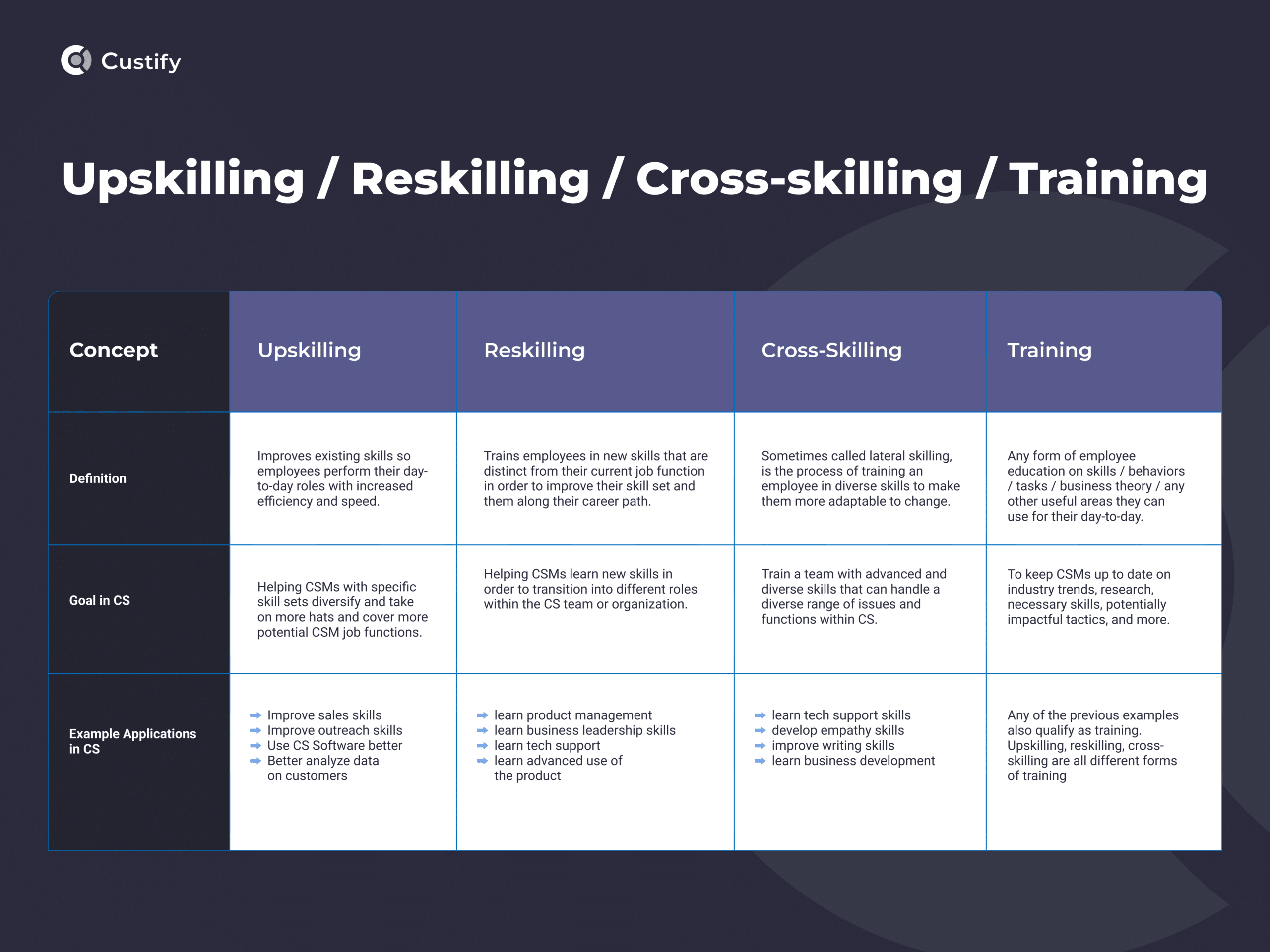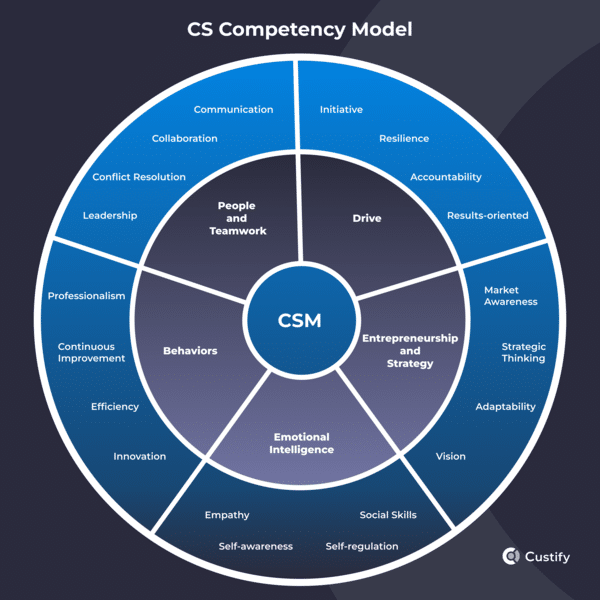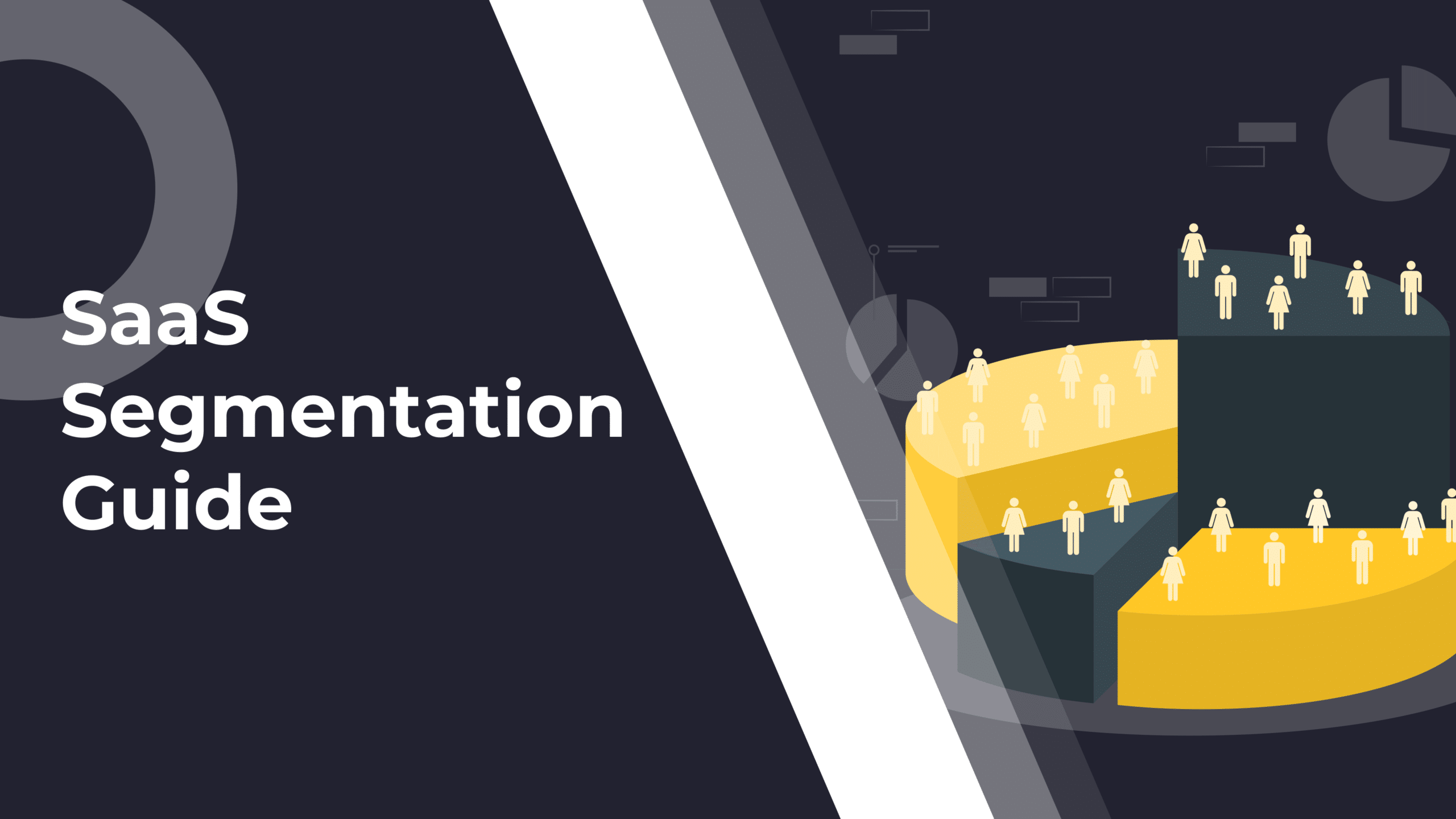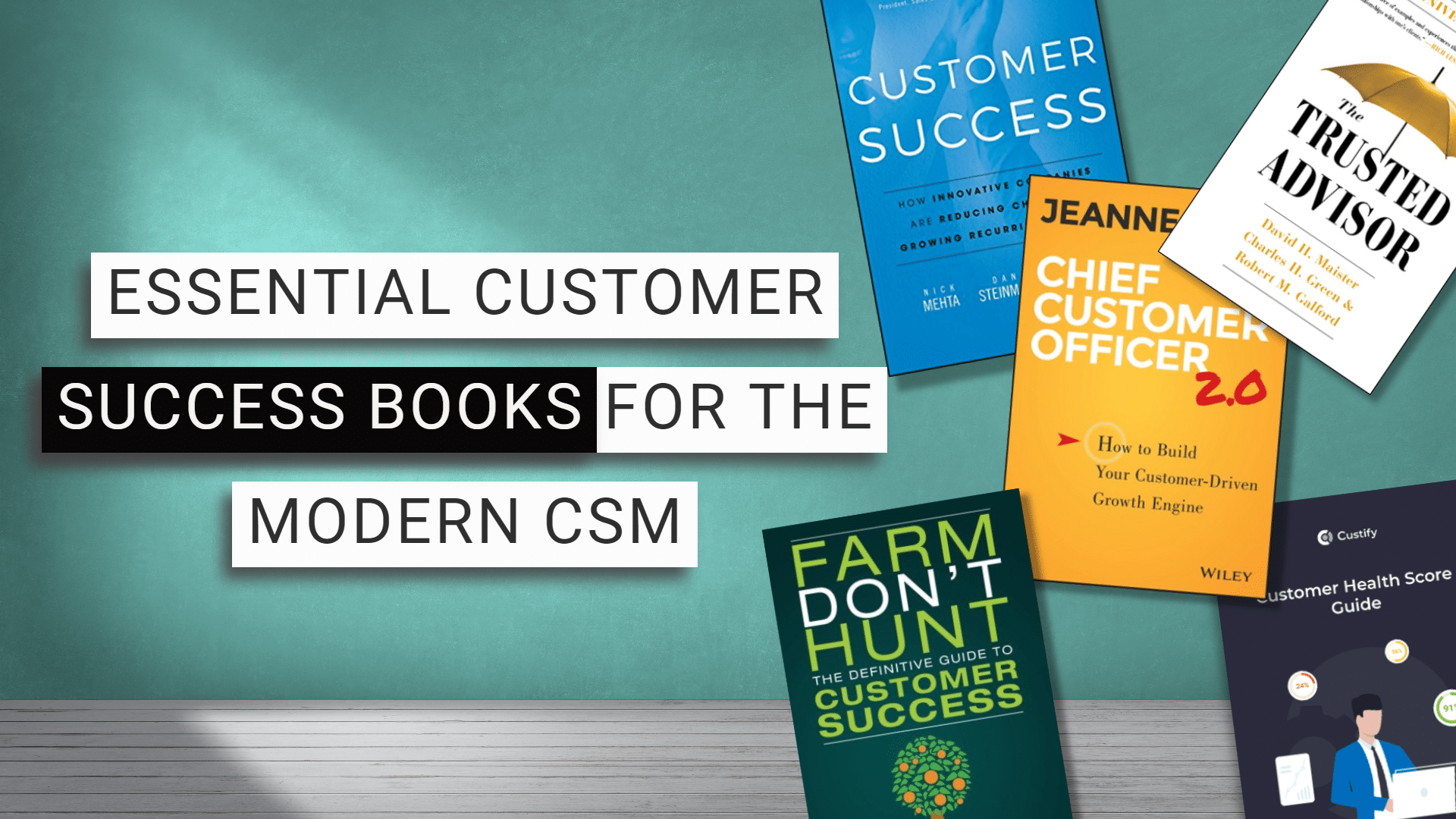There’s no need to beat around the bush – SaaS is changing. We’re seeing it all around us. The question can’t be “how do we stop it?”, but “how do we evolve along with it?” – because the alternative is being left behind.
In this new SaaS environment, upskilling stands out as the most obvious response. But how does one even begin an upskilling initiative?
Today, I’ll take a cold, hard look at that question, trying to answer:
- What upskilling means deep down, and how it compares with reskilling, cross-skilling, and training.
- Why upskilling is vital for keeping your workforce and CSMs up to speed with the evolving world around us.
- How to create an effective CSM upskilling strategy in your business, step by step.
What Is Upskilling?
Upskilling is a sustained effort to enhance an employee or team’s current skills and add new ones. Upskilling can either be done on the individual level – where employees decide they want to improve their skills – or on a team or company level – where managers decide there’s a need to upgrade current team skills so they plan an upskilling strategy.
Employees who go through an upskill process don’t simply learn new skills, but also deepen their existing knowledge with vital context, allowing for more flexibility and understanding of their organizational roles.
Upskilling vs Reskilling vs Cross-skilling vs Training
Upskilling isn’t the only term thrown around this space however. You may have heard of training, reskilling, cross-skilling – which one’s which and is there even a difference?
Let’s demystify that with a side-by-side review:

Why Should You Upskill Your Workforce?
To best understand why adequate training and upskilling are important to your business, I think we should explore the topic from three perspectives:
1. Changing future of work trends. According to the recent Future of Jobs Report from the World Economic Forum, the traditional career path is changing dramatically due to the speed at which the world itself is changing. Overall, this means a move towards accumulating more and more skills in order for your people and your business to stay relevant on the market, more on this later.
2. Renewed need for sales skills. According to multiple CS leaders we’ve hosted in our webinar series, sales skills are becoming increasingly vital in order for CS to move beyond being a cost center and into the growth area of SaaS. Spoiler alert – if your CSMs are lagging behind in terms of upsells and cross-sells, it’s time for some upskilling.
You need to make sure that you’re leveraging your sales skills in a way because it’s going to be a very important metric. And it is—I mean, it’s been for 2023, and it’s going to continue to be an important metric for 2024. The more that we get comfortable with that selling piece, the better we’ll do for next year.
– Erika Villarreal, Principal CS Manager at Eptura
3. Employee development. There are 4 core ways employee development impacts a business – it increases employee engagement, retention, it attracts new employees, and improves overall employee performance. Helping your people grow is not a new concept, but recent data shows millennials are 59% more likely to pick your job offer if you’ve got opportunities for them to grow.
How Does an Employee Benefit from Upskilling?
Employees unlock a good number of multifaceted benefits from upskilling mostly because any new skill builds upon an already existing list of competencies. And amidst a global $8.5 trillion talent shortage, the more you can increase your talent, the better. Let’s see how:
- New skills. New skills allow your employees to take on new tasks and responsibilities within your organization, improving their value-addition.
- Improved competency. Any new skill will be placed in the context of what an employee can already do. Becoming versed in multiple complementary skills is a big plus on their resume and will allow them to implement increasingly complex tactics.
- Job satisfaction. The better one can execute their day-to-day operations, the more they’ll gain a renewed sense of purpose and satisfaction, reducing frustration and stress while increasing productivity.
- Increased employability. More skills means it’s also easier for them to get a job or obtain a promotion to a better, more strategic position. To put it simply, the more one develops a complex and interdisciplinary CS skill set and resume, the more valuable they become as an employee.
- Unlocked career opportunities. Furthermore, employees undergoing upskilling can open up career paths previously unavailable to them. For example, someone starting off as an Account Manager could lean more on the onboarding side of the job, go through upskilling and land a promotion to Customer Onboarding Specialist, from there, with a bit of experience and some management training, they could easily become an Onboarding Manager. At this point the diverse skills learned throughout their career, paired with even more upskilling and courses, could easily lead to a job as Director Of Customer Success and even Chief Customer Officer further down the line.
On the Importance of Skills In an AI-World
If we take a birdseye view of the business world, we had the move to remote work in 2020, then the many challenges brought on by the Great Resignation peaking in 2021, only to then find that quiet quitting was here to stay, a looming danger for businesses who did not adequately consider their employees’ needs.
Then, after so many paradigm shifts, there naturally comes another – what many recruiters are calling the Skills Revolution. Let me contextualize:
A few years ago, blockchain was the hot keyword everyone used in marketing. Today, despite its perils and lack of responsible oversight, AI has taken its place with everyone who’s anyone jumping to adopt somewhat unproven solutions during a global talent shortage totaling $8.5 trillion (cited previously).
The result?
Both the World Economic Forum and LinkedIn predict a Skills Revolution where competent employees need to have a holistic understanding of their work areas and the necessary interconnected skills to be productive at scale and remain relevant, while using AI, and move beyond the traditional systems of education to develop their skills on their own (or with the help of their employers), in a generalist approach.
But don’t trust me, trust Milly Tamati, Founder of Generalist World:
@generalist.world What you need to know about the 297 page “future of jobs” report by the World Economic Forum @World Economic Forum @LinkedIn ♬ original sound – Milly | Generalist Careers 🌀
Why Is Upskilling Important in Customer Success?
In customer success, we’re given many hats to wear.
And more often than not they’re all necessary: we need to know onboarding, we need to know sales, we need to know account management. These are simply the first three that come to mind.
Back in 2023, we found that over 48% of CSMs were responsible for 10 or more job activities. One year later, and the situation has barely improved, lowering by 6 to 42% according to our 2024 CSM Insights Report.
↪ What is the solution then?
It’s clear that companies by and large will not change their demands. If anything, the Skills Revolution and adoption of AI will put even more pressure on CSMs to truly wear all those hats.
Yet, instead of firing specialized employees and hiring more expensive, multiskilled ones, it makes more business sense to upskill your current workforce and take a bit of inspiration from the generalist approach:
- Identify all the interconnected skills necessary for high performance in CS
- Upskill CSMs by providing courses and training on their weakest areas
- Aim for a generalist approach: CSMs need to learn multiple skills at least on a surface level in order to be able to use them in their day-to-day, combining them in innovative and efficient ways.
- Don’t forget about mental health: just because CSMs are responsible for 10+ major job activities doesn’t make them superhuman. Upskilling allows for more complex tasks, but the CSM is still only one person.
For the next part, I’ll propose a complete, workable process for upskilling in customer success.
How to Upskill Your CSMs and Create an Upskilling Strategy
1. Determine all necessary or complementary skills for your business needs
A task for the head of CS who understands and must facilitate business development
In order to build a functional and cost-effective upskilling program amongst your CS team, you’ll need to understand your business needs. And that starts with your Head of Customer Success – the CS function most in touch with both the business side and the CS side of things. The CS leader is always mindful of business development opportunities, and is therefore best equipped to understand the value addition of upskilling and help bring it to fruition.
Here are some simple steps to figuring out the necessary skills for your CSMs:
- Look at your customer dashboards and make a list of high-ARR, low-friction, and best-fit customers that have grown in value over the course of their relationship with you.
- Understand the skills of the assigned CSMs and how those skills aided growth over the course of the account relationship(s).
- Rank skills by most valuable, while paying attention to long term returns and the less tangible aspects of customer interactions (i.e. maybe a CSM has good empathy and EQ skills which complemented their sales skills).
Bear in mind that customer relationships can be influenced by many things, so don’t be too quick to assign direct correlations. But once you’ve completed this step, you should have a good picture of the CSM profile you need on your team.
2. Analyze your current CS team members and assess areas of improvement
Now that you have the list of skills, you should assign it to various areas of the customer success competency model. According to multiple sources, the 5 main areas of customer success performance are:
- People and teamwork.
- Drive.
- Entrepreneurship and strategy.
- Behaviors.
- Emotional intelligence.
All of these can be broken down into multiple skills. We’ve combined our research with our own internal conclusions to build a more exhaustive customer success competency model:

Now that you have your competency model with assigned skills, use it to gauge your CSMs’ strengths and weaknesses – not with a policing mindset, but with growth and upskilling as the ultimate goal.
By completing this step and the previous one, you’ll know your team’s least developed skills and which of those require more urgent training in order to help customers better and increase their ARR.
3. Curate training materials, courses, and other opportunities for your team
Not everything you find online is good for learning in CS. CS teams need to filter their resources by usefulness. Online learning platforms. Certificates don’t mean s&%t
Next, work with your team to figure out what types of training would be most effective for them. Remember that certificates can often be a little scammy, and sometimes more value can be derived from simply listening to a recent webinar on the specific topic your people need upskilling on.
To make things easier, make a list of available resources which you find good and useful. Here are some sample suggestions of where to look:
- Customer Success Collective – one of the best overall CS communities on the web. Their membership plans can help you kickstart CS learning the right way, while their content and freebies can be a great start for anyone who doesn’t want to spend money on upskilling just yet. Their Slack channel is also full of opportunities to learn.
- Custify Customer Success Resources – here we regularly publish studies, eBooks, eGuides, Podcast episodes, and webinars, all on trending topics within Customer Success. If, say, your team needs to increase their onboarding skills, we have multiple webinars and an article guide on the topic.
- Practical CSM. One of the most sought-after CS certifications, allows your team to develop any skills missing from their CSM portfolio in a holistic approach focused on how to manage all the different skills needed in CS.
- Hubspot’s Customer Success Resources – a good rundown of professional guides we also regularly check out.
- SuccessCOACHING – A great place to approach CS learning more seriously, providing training and certifications that can help bolster any CSM’s skillset and resume.
4. Make time for internal learning and creating team resources
Having team members train other CSMs is one of the best approaches because it not only improves both their skillsets, but also because it improves communication and collaboration within your CS team.
However, the most common issue with internal learning is the lack of dedicated time for just this process. Think about it: when everyone’s putting out fires and jumping in calls with clients, it can be hard to schedule training time from your own team.
While creating team resources is a more frequent practice, there often isn’t enough time to make sure newly onboarded CS team members understand what’s being put in front of them.
As such, think of ways to prioritize peer learning practices and solutions, and carve out time specifically for this task for everyone involved. Furthermore, make sure that time is sufficient for questions, and that the person providing training leaves adequate time for discussions, practical exercises, and questions.
5. Go data-led if you want to accurately track, analyze, and predict your success with upskilling
We’ve been talking about the importance of Data in Customer Success for quite some time. I’m a strong advocate for having all the data you need to be efficient in CS. And this instance is no different. In order to really understand how you’re doing with your upskilling strategy, you should think about:
Data Governance. Someone in your CS team or organization needs to own your data element. That means having an overview and access of all the interconnected systems and departments, software and personnel – everything needs to be set up so every stakeholder has access to their relevant datasets.
Upskilling Data. Next, you should work with whoever is in charge of Data to secure data points from your upskilling program: how many CSMs took part in it, how they improved, what skills they used and how they used them. Learning new skills is great, but you should also make sure CSMs get a chance to use those skills, otherwise all that time will have been for naught.
Data Hygiene. Last but not least, follow a data hygiene approach in everything you do – particularly when it comes to internal processes.

6. Tie it all together in a continuous learning process that starts with employee onboarding
Once you have a good working model for your upskilling program, you can elevate it to a continuous learning process that can be presented to new CSMs as soon as they start onboarding. This could be a joint initiative with HR to develop your employees into core, multiskilled people within your organization.
CSMs at the start of their customer success career will be particularly open to such an approach and will work with you to develop their careers into more useful roles – roles that will usually be within your organization as this is also a standard practice to drive employee loyalty. It’s quite literally a win-win.
What’s YOUR Skill Level?
Want to know where you place on the customer success ladder? Check out our CS Career Path guide and use the competency model above to determine which skills you’re well-versed in, and which would require more training. We also included more upskilling and training materials under each job function.
Remember that your CS skill level is only good if it matches the demands of your role. And in an increasingly diverse SaaS market, Customer Success will only become more important and complex as we add new skills to satisfy various day-do-day demands of our jobs. So keep an eye out on the Custify Blog for more resources, webinars, and guides to help in your continued success!




